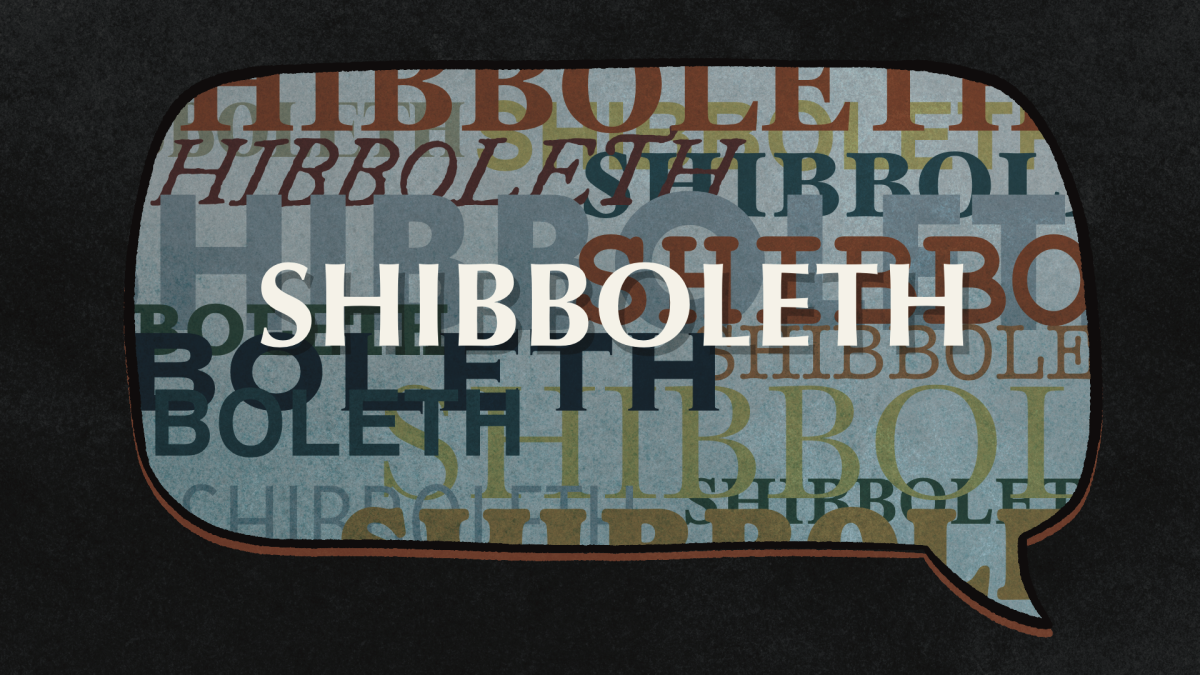Anytime an NC State student or employee logs on to a University-affiliated webpage, they are met with the “Shibboleth Login Service” that asks for their virtual credentials. While students often scoff at the antiquated word and ponder its pronunciation, many likely don’t know the biblical origins of the software’s namesake.
The word “shibboleth” originates from the Hebrew language, with its first known literary usage hailing from the Book of Judges in the Old Testament of the Bible. Judges 12:5-6 details a confrontation between the Gilead and the Ephraim tribes in which the Ephraimites are attempting to cross the Jordan River through a ford, a spot in the river able to be crossed without a bridge, under control by the Gileadites.
When undercover Ephraimites insisted they be allowed to cross, the Gileadites asked them to say one word to prove which region they belonged to — shibboleth.
Jason Staples, a professor of religious studies with a specialization in early Judaism and Christian origins, described this as a password system the Gileadites used to determine who was on their side. Because of the dialectical differences between regions at the time, the Gileadites knew the Ephraimites wouldn’t pronounce “shibboleth” the same way they did, making it the perfect test of identity.
“They devised a scheme where, essentially, they would ask them to say ‘shibboleth,’ and then the ones that said ‘sibboleth’ they knew were from the other tribe,” Staples said. “Then they would kill them. They would execute because clearly they’re from the enemy.”
The word shibboleth has evolved to be somewhat of an idiom independent of its biblical origins. Now, a shibboleth might be asking someone to identify aspects of one’s culture or social circle, rather than relying solely on word pronunciation, to determine if they are part of your in-group.
This new meaning rings true in the world of information technology, hence the Shibboleth software’s nod to the scripture.
Marc Hoit, vice chancellor for information technology, said the Shibboleth software is part of the University’s identity and access management strategy. “Identity” is focused on establishing whether the user is who they say they are, hence Shibboleth’s need for a password, and “access” then determines what information is available to that user based on which groups they are in, which Hoit compared to the Gileadite and Ephraimite tribes.
Hoit said the University has thousands of digital groups for everything from the clubs you’re in to which classes you’re taking.
“We create groups and we populate those groups by adding your identity into that group to say you’re a member,” Hoit said. “We have groups about what department you’re in, what college you’re in — any formal group that we keep track of. What doors you can access, because what building you’re allowed to go in or not is a group. So those groups and those passwords are all linked together with that identity.”
The Shibboleth software was born out of a desire for higher education institutions to be able to collaborate across universities and research labs. Hoit said NC State was one of the first institutions to sign on to the project in the late ‘90s, along with government agencies and other research universities. This led to the development of Internet2, Shibboleth’s home and a national network designed to connect research and educational institutions.
While it’s not the sole defense, Hoit said Shibboleth provides extra security to the University’s cybersecurity efforts.
“You’ll know when you go to log into Google, it pops up the Shibboleth page, so it gives us an extra layer of security that we control who has access,” Hoit said. “If a student graduates, we can take that away. If a student’s account is hacked, and we see that your computer is hacked and you’re on our network, we can shut that down. So we have a lot more control to stop bad things from happening and stop it from spreading.”
The original meaning of shibboleth is contested, with some accounts referencing it as an ear of grain, such as corn, or a flowing stream. Staples said literacy levels at the time were likely lower than scripture makes it seem, so it’s possible that the Gileadites pointed to a river or ear of corn and requested the Ephraimites name the object in order to get them to say their code word.
However, if the Gileadites were to have written the word and asked the Ephraimites to read it out loud, there would have been one minor giveaway.
The first letter of “shibboleth” is the Hebrew letter “shin,” which is drawn as a U-shape with a third branch in the middle. The same symbol also stood for the letter “sin.” Staples said in the Middle Ages, the language evolved to denote vowels and consonants more clearly, so “shin” was eventually distinguished with a dot on the furthest right branch and “sin” with a dot on the left. Before that distinction, people had to know the beginning of the word based on context.
“Essentially what they did is they asked them to pronounce a word that begins with that letter, which can be shin or sin, and which one they went with — which was dialectically, regionally based — that determined who was and who wasn’t on our side,” Staples said.
Staples compared this to the English word “sure” which many pronounce with a “sh” sound, but those not familiar with the language or from a different region may simply pronounce with an “s.”
As for how Staples helps his students remember the slight difference?
“It’s easy to remember because the dot for ‘sin’ is always on the left because sin is never right,” Staples said.













